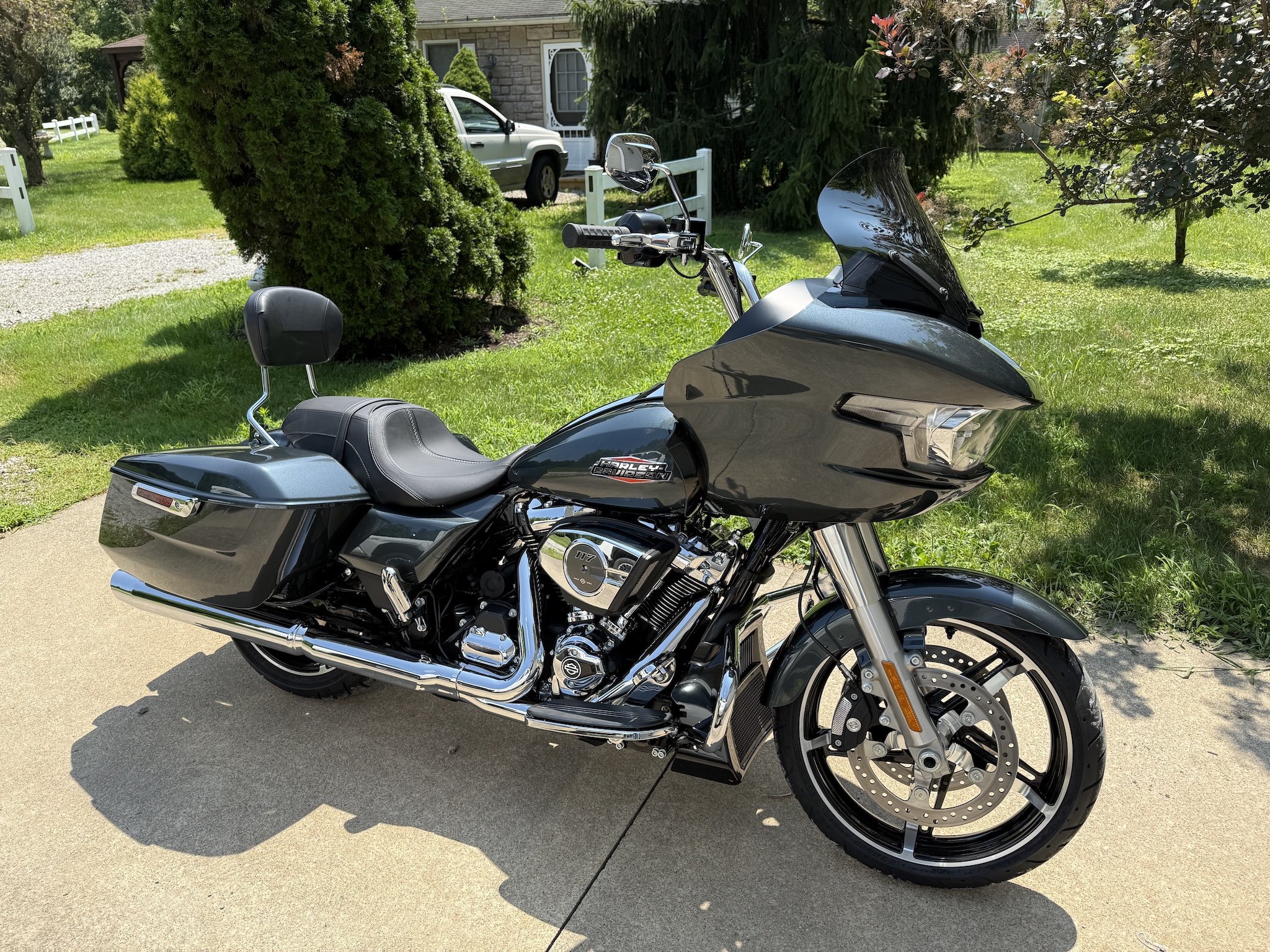-
Posts
18,113 -
Joined
-
Last visited
-
Days Won
242
Content Type
Profiles
Forums
Gallery
Events
Store
Everything posted by Freebird
-
Well...I wasn't 100% sure about which model of Kawasaki they road, the 900 or the 1000...I just did some research and found that they actually used both. KZ-900P and KZ-1000P
-
In November 1947, the 1/2 horsepower A-Type Honda was being manufactured and sold as a complete motorbike. Because the motorbike gave off a lot of smoke and a stench of turpentine it was known as the "Chimney".
-
If I remember correctly, Ponch and John road Kawasaki KZ1000 Police Specials.
-
Indian Motorcycle dropped the "R" in 1923. What do I win?
-

Passenger Intercom
Freebird replied to Danielthegrey's topic in Venture and Venture Royale Tech Talk ('83 - '93)
Check with http://www.sierra-mc.com They should be able to fix you right up. -
Long ago, before the big crash of '06, I had posted a picture of the Yamaha engine. It was a cool pic that showed the engine at an angle with exhausts and etc. intact. I think I originally got it from the Yamaha site but it's not there now and I can't find it. Did anybody happen to keep a copy?
-
Here you go. http://www.venturerider.org/forum/showthread.php?t=645
-
What kind of tires does it have? If it has the Bridgestone tires, they are VERY noisy. I would start with getting rid of them if that is what it has.
-
Folks, I'm almost out of small VentureRider patches. I need to get some new ones ordered but wanted to check with you first. Those of you who have purchased the patches, were you happy with them? Is our LOGO still OK or are you ready for something different? As always, your opinions are important.
-
HEY...I didn't CREATE that ... I just passed it on.
-
I have been meaning to mention this but keep forgetting. If you wish to receive email from other members here, you must enable that option in your UserCP. It is set to "NO" by default. You need to click on UserCP in the menu bar, then click on "Options" and then check the box "receive email from other members". We use secure emailing here so by checking that option, you are NOT actually giving anybody your email address, it only enables email through the forum mail here. Thanks
-
You are right to disagree with me. I knew there was another type other than heli coils and I agree with you. I intended to do a search after posting that because I don't remember what they were called. Thanks for correcting me.
-
That's a fun idea. Of course it would completely rule me out because I've never done ANYTHING stupid.
-
You may also notice that I've added the NewEnough banner to the top of our forum. It will alternate with the RMSPortmax banner. PLEASE UNDERSTAND....I am getting NOTHING from New Enough. If you make a purchase from them and designate VentureRiders as your chosen club during checkout, our members will be the ones who benefit in the way of prizes, gift certificates, etc. A HUGE thanks to New Enough for their support of our club.
-
I'm thinking that maybe it's time for another contest. What do you think? Any ideas? As you know, we are a listed club at the New Enough website. http://www.newenough.com/ Not only do they have great products, service and prices but when you buy from them, you have the option during checkout to choose VentureRiders as your club of choice. Every time you do that, they make a small donation into our account there. Over time it does add up a bit and then we can use it for rally prizes, contests, etc. So, it's time for a contest to give away some of the money...most of the money...that we have in our account there. So, how about a $100.00 gift certificate from New Enough for a lucky winner. So....all we have to do is come up with a contest. I've had a few thoughts but am open to your suggestions. What do you think?
-

HD pipes loss of power
Freebird replied to Moakster's topic in Royal Star Venture Tech Talk ('99 - '13)
WOW...now that one might have been hard to find. I know you have been struggling with this for a while. Glad you finally found the problem. Great post for us all. -
First I've heard of it. I never got one. I would just answer it honestly. Express your likes and dislikes if you have any.
-
I think that the list is fairly accurate now. There is no way for a member to generate such a list but I can do it from the admin panel. If you get a message together that you want sent to a certain area, I'll be happy to do it for you.
-
I think your only options are going to be a heli coil type insert. Shouldn't be TOO bad. Sorry it happened to you though.
-
OK...I tried to handle this with a bit of humor and give everybody a chance to step back but I can see that's not working. I am now closing this thread and will delete the negative remarks on both sides.
-
WOW...I get to act like a moderator. OK now, I want both of you to go sit in your rooms until you can play nice. Pitbull, I have met you and ridden with you and your wife and I know you are a good guy and have a good heart. You are making too much of this though. I think you read something into the post that was not intended. It honestly sounded like a friendly and honest request to see the pictures and to know why you gave up on the Harley. Heck....I wanted to see them too. It's NOT that you are being doubted but just that I love seeing pictures of our members past bikes. I've posted many of mine in the past. So please, let's get this conversation back on track. I guess kissing and making up is not an option huh?
-

Vibrates going up hill in 5th gear
Freebird replied to a topic in Royal Star Venture Tech Talk ('99 - '13)
Downshifting at ANY speed on the 2nd gen is not a problem. I've downshifted at over 110 MPH. Now that was BEFORE I installed the VMAX rear, don't know that I would try it now...then again...maybe I will. -
Relax..let your mind go...read it to the end. http://hytaipan.home.comcast.net/media/serenity2.html

